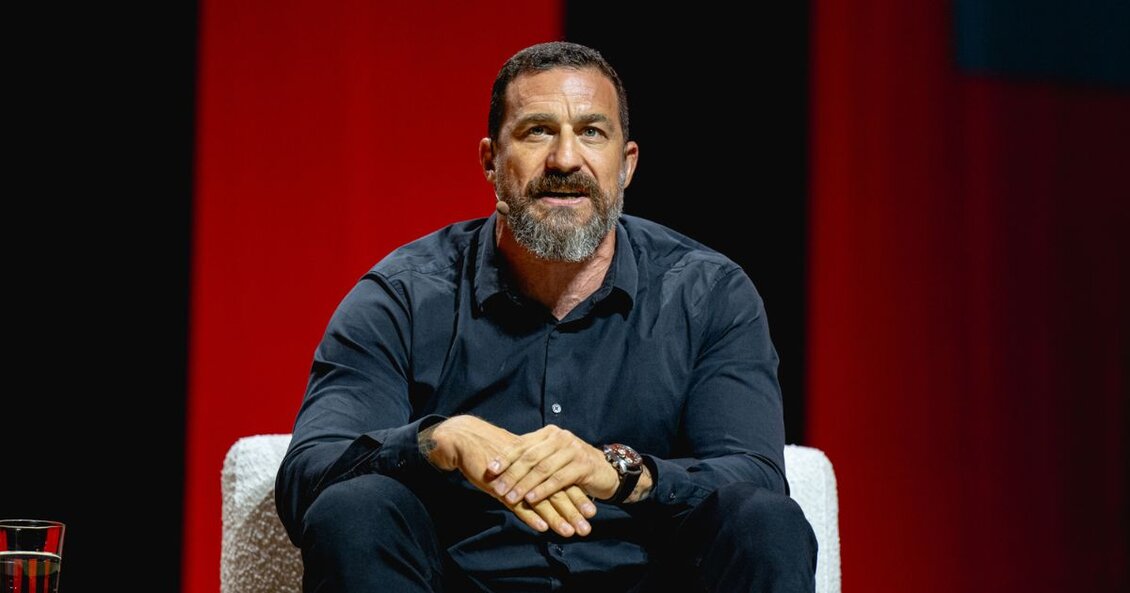Inbound
December 22, 2025How to Use AI to Personalize Emails at Scale
Session Recap
AI
INBOUND 2026 GA and VIP tickets are back on sale—lock in your spot now

What does dopamine have to do with focus and productivity and how does that relate to your work day? Andrew Huberman, neurobiology professor and host of Huberman Lab Podcast, joined us at INBOUND23 where he sat down with Brian Halligan (HubSpot’s co-founder and executive chairperson) to talk all things dopamine, neuroplasticity, and the importance of routine for fueling motivation, productivity, and creativity.
Here are some key takeaways from their conversation and how you can tap into dopamine to get the most out of your work day.

[Photo credit: Ben Esakof/Halo Creative for HubSpot]
Simply put, dopamine is a chemical that is produced in our brain. Everyone has a baseline level of dopamine and throughout the day, it is either released or not released at varying levels. “The most important thing to understand is that dopamine is like a propeller,” said Huberman.
Its main function is to drive our sense of motivation and pursuit.
Consider that daily baseline level of dopamine as your reservoir for motivation. Each night that reservoir gets refilled with deep sleep. And as such, Huberman points to the importance of learning how to become a better sleeper or getting in stretches of non-sleep deep rest as a way to reset dopamine levels.
Long arcs of dopamine releases can help increase motivation, focus, and alertness. Things like cold showers, non-sleep deep rest, and thinking about the positive anticipation of your goals and what you’re trying to pursue can generate large increases in dopamine that last hours, and sometimes days, which in turn increases your level of focus and energy.
You experience the greatest increases in dopamine when you anticipate you are on the right path to the things that you want that are currently not in your physical or emotional possession.

[Photo credit: Ben Esakof/Halo Creative for HubSpot]
What does a neuroscientist’s ideal morning look like? Wake, hydrate, sunlight, movement, caffeine, cold shower. Let’s dive a little deeper.
💦 Hydrate: As soon as he wakes, Huberman reaches for water and typically drinks 16-32 ounces to get his day started. Why? Dehydration can reduce alertness and cognitive focus.
☀️ Sunlight: No matter the outdoor conditions, he tries to make a beeline for sunlight (even if the morning is overcast). Why? “Light is the most powerful driver of these neural chemicals,” he noted. Sunlight increases the catecholamines (like dopamine, epinephrine, and norepinephrine) as well as cortisol which helps provide a boost of energy and something you’d typically want to have elevated earlier in the day.
🤸 Movement: Huberman recommends a mix of resistance training and cardiovascular training. Why? Because of the way that cardiovascular training impacts blood flow to the brain (due to the repetitive nature of movement), it has been known to put people into states of better cognition. On the other hand, resistance training is more about maintaining neural function and off-setting cognitive decline by engaging neural pathways and keeping them active.
☕ Caffeine: Depending on your relationship with coffee and how you tolerate caffeine, Huberman recommends drinking it before resistance training in the morning. For those who experience an afternoon crash, he suggests delaying caffeine intake by 90-120 minutes after waking. Why? It taps into mechanisms related to adenosine clearance and cortisol, and by delaying coffee consumption you won’t have as much or any afternoon crash, which in turn, means your performance will be at a more elevated level.
🚿 Cold Shower: As unpleasant as it may sound, a cold shower can increase your level of focus and energy. Why? During a cold water shock, “dopamine, norepinephrine, and epinephrine are released and those increase motivation, focus and alertness in profound ways, as much as 150% above baseline lasting as long as 2-4 hours,” Huberman explained.
Following a daily morning routine can help set up a productive architecture for each 24 hour cycle.

[Photo credit: Ben Esakof/Halo Creative for HubSpot]
Dopamine can be leveraged to help fuel motivation throughout the day. It can support goal setting and achieving new milestones for projects — each step that is completed releases dopamine which makes you feel a sense of accomplishment and motivation to get to the next milestone. When your mind and body are used to predictable patterns in energy and focus, you can set yourself up for long term success. To break up your workday, Huberman recommends looking at it in three components:
Each work day is filled with deadlines, tasks that change in priority, and at times, stressful projects to manage. The main takeaway?
Match the type of productivity that you are trying to accomplish to the state that you are in.
TAKEAWAYS
You have the power to make small changes in your daily routine that can have a massive impact on your overall focus and productivity. And resetting your dopamine levels can help with that. As you start each day, remember to prioritize sunlight and movement. Break your day out into sections and if possible, focus on implementation tasks earlier in the morning and brainstorming and creative ones in the afternoon to maximize your effectiveness. Most importantly, make sure you are taking the time to reset your body after each day with deep sleep.
Want more inspiration and expertise? Subscribe to our email list below for first dibs on session highlights, recaps, and all things INBOUND: